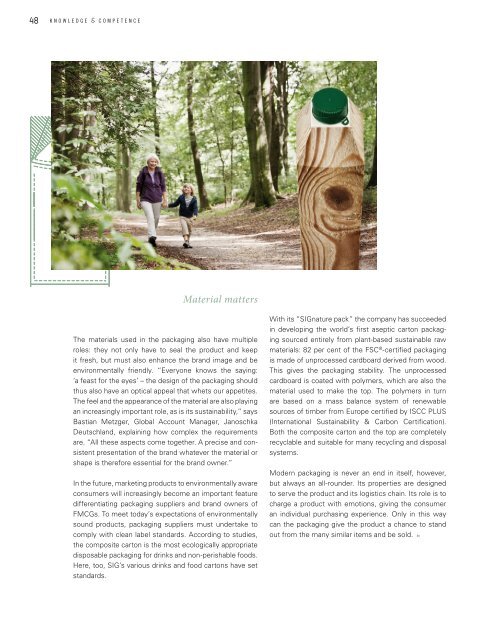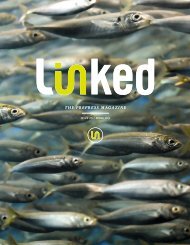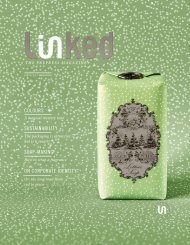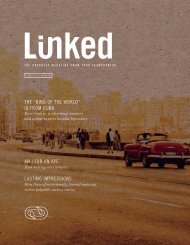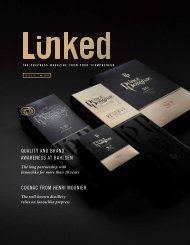Create successful ePaper yourself
Turn your PDF publications into a flip-book with our unique Google optimized e-Paper software.
48 k n o w l e d g e & c o m p e t e n c e<br />
Material matters<br />
The materials used in the packaging also have multiple<br />
roles: they not only have to seal the product and keep<br />
it fresh, but must also enhance the brand image and be<br />
environmentally friendly. “Everyone knows the saying:<br />
‘a feast for the eyes’ – the design of the packaging should<br />
thus also have an optical appeal that whets our appetites.<br />
The feel and the appearance of the material are also playing<br />
an increasingly important role, as is its sustainability,” says<br />
Bastian Metzger, Global Account Manager, <strong>Janoschka</strong><br />
Deutschland, explaining how complex the requirements<br />
are. “All these aspects come together. A precise and consistent<br />
presentation of the brand whatever the material or<br />
shape is therefore essential for the brand owner.”<br />
In the future, marketing products to environmentally aware<br />
consumers will increasingly become an important feature<br />
differentiating packaging suppliers and brand owners of<br />
FMCGs. To meet today’s expectations of environmentally<br />
sound products, packaging suppliers must undertake to<br />
comply with clean label standards. According to studies,<br />
the composite carton is the most ecologically appropriate<br />
disposable packaging for drinks and non-perishable foods.<br />
Here, too, SIG’s various drinks and food cartons have set<br />
standards.<br />
With its “SIGnature pack” the company has succeeded<br />
in developing the world’s first aseptic carton packaging<br />
sourced entirely from plant-based sustainable raw<br />
materials: 82 per cent of the FSC ® -certified packaging<br />
is made of unprocessed cardboard derived from wood.<br />
This gives the packaging stability. The unprocessed<br />
cardboard is coated with polymers, which are also the<br />
material used to make the top. The polymers in turn<br />
are based on a mass balance system of renewable<br />
sources of timber from Europe certified by ISCC PLUS<br />
(International Sustainability & Carbon Certification).<br />
Both the composite carton and the top are completely<br />
recyclable and suitable for many recycling and disposal<br />
systems.<br />
Modern packaging is never an end in itself, however,<br />
but always an all-rounder. Its properties are designed<br />
to serve the product and its logistics chain. Its role is to<br />
charge a product with emotions, giving the consumer<br />
an individual purchasing experience. Only in this way<br />
can the packaging give the product a chance to stand<br />
out from the many similar items and be sold.


